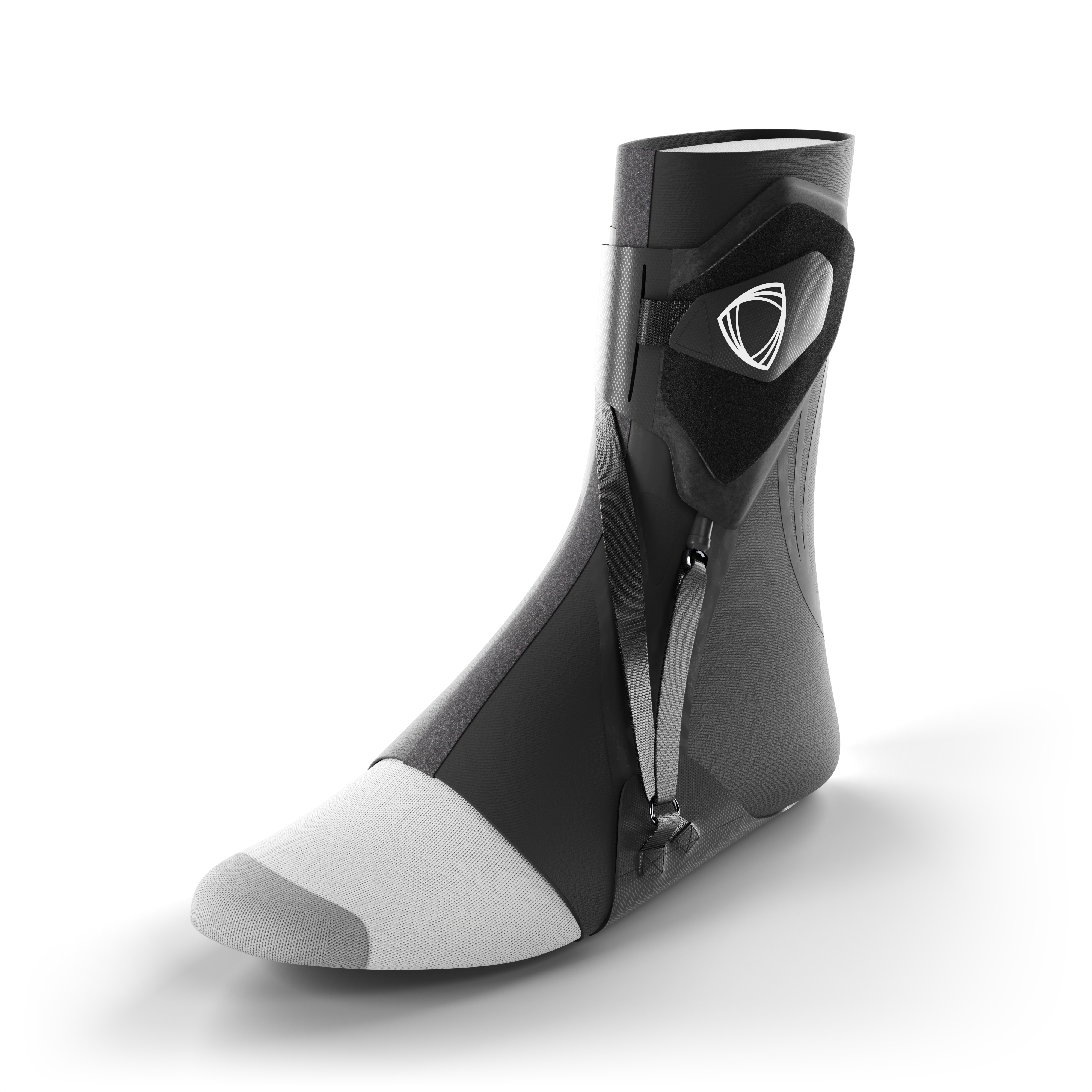Unveiling the mystery behind ankle pain when walking
If you're experiencing ankle pain when walking, you're not alone. Foot and ankle pain is a common condition caused by sports injuries, arthritis, tendonitis, and other medical conditions. It can range from mild discomfort to severe pain that limits mobility and affects your quality of life.
If your ankle hurts when walking, your doctor may perform a physical exam, imaging tests, or other diagnostic tests to determine the underlying cause. Treatment options may include rest, ice, compression, or physical therapy depending on the severity and cause of your pain.
Key takeaways
- Ankle pain results from a variety of factors, including injuries, arthritis, and other medical conditions.
- Common causes of ankle pain when walking includes stiffness, sprains, strains, arthritis, tendonitis, and nerve damage.
- Seeking medical attention can help to determine the underlying cause of your symptoms and develop an appropriate treatment plan.

Causes of ankle pain when walking
If you experience ankle pain when walking, it can be a sign of an underlying condition. Here are some of the common causes of ankle pain when walking:
Sports-related foot and ankle injuries
Sports-related injuries can cause ankle pain when walking, affecting athletes of all levels. Common culprits include ankle sprains from sudden twists or awkward landings, fractures from forceful impacts, and overuse injuries like tendinitis. Proper diagnosis, rest, and tailored treatment are essential for recovery and a safe return to sports.
Wear and tear
Over time, the ankle joint can wear down due to constant use. This can cause pain and discomfort when walking. Wear and tear can also lead to osteoarthritis, a condition that causes inflammation and pain in the joints.
Ankle sprains and strains
An ankle sprain is a common injury that can cause pain when walking. It occurs when the ligaments in the ankle are stretched or torn. This can happen during physical activity or even just walking on uneven ground.
Achilles tendonitis
The Achilles tendon is the largest tendon in the body and connects the calf muscle to the ankle bone. When this tendon becomes inflamed, it can cause pain and discomfort when walking. This condition is known as Achilles tendonitis and can be caused by overuse or injury.
Sinus Tarsi Syndrome
Sinus Tarsi Syndrome is a condition that causes pain and tenderness in the sinus tarsi, a small canal located in the ankle joint. This condition can be caused by injury, overuse, or arthritis.
Autoimmune disease
Autoimmune diseases such as lupus or rheumatoid arthritis can cause ankle pain when walking. These conditions occur when the immune system attacks healthy cells in the body, leading to inflammation and pain in the joints.
Rheumatoid arthritis
Rheumatoid arthritis is a chronic autoimmune disease that causes inflammation in the joints, including the ankle joint. This can cause pain and stiffness when walking, as well as other symptoms such as fatigue and fever.
My ankle hurts for no reason
If your ankle hurts for no apparent reason, it may be due to an underlying medical condition such as arthritis or gout. In some cases, ankle pain may be a sign of a more serious medical condition, such as a blood clot or nerve damage. It might be important to seek medical attention if you experience ankle pain for no apparent reason.

Symptoms of ankle pain when walking
Sharp pain in ankle
Sharp pain in the ankle is characterized by a sudden and intense sensation that feels like a stabbing or shooting pain. The pain may be localized to a specific area and can vary in intensity. Icing the area for 15-20 minutes at a time and keeping the ankle elevated can help reduce swelling and pain. Over-the-counter pain relievers like ibuprofen or acetaminophen may also provide temporary relief.
Pain on top of foot near ankle
Pain on the top of the foot near the ankle refers to discomfort or soreness experienced between the ankle and the base of the toes. It can affect the area around the dorsal surface of the foot, including the region near the base of the big toe. Pain in this area can manifest as a sharp, throbbing, or achy sensation, often exacerbated by movement, walking, or pressure on the affected area.
It's important to rest if you experience pain on the top of your foot near the ankle when walking. Apply ice to reduce swelling, and seek medical attention if your pain persists or worsens.
Pain on outside of ankle
Pain on the outside of the ankle refers to discomfort or soreness felt on the outer part of the foot, close to the ankle joint. Applying ice for about 15 minutes or elevating the foot by resting it on a pillow can be helpful. It's essential to listen to your body if the pain worsens and take it easy, avoiding activities that make the pain worse.
Top of ankle pain
Top-of-ankle pain refers to discomfort or soreness felt on the upper part of the ankle joint. It can occur due to injury, strain, or specific conditions. To manage the pain, it is recommended to rest the ankle, apply ice packs, and avoid activities that aggravate the pain. If the pain continues or worsens, it's key to listen to your body and give your ankle time to heal.

Diagnosis of ankle pain when walking
If you are experiencing ankle pain when walking, your doctor may perform a physical examination along with additional diagnostic tests.
Physical examination for ankle pain
During a physical examination, your doctor will examine your ankle for any signs of swelling, tenderness, or deformities. They may also ask you to move your ankle in different directions to assess your range of motion. Your doctor may apply pressure to various areas of your ankle to determine the source of your pain.
Medical history evaluation
Your doctor will also review your medical history to determine if you have any underlying medical conditions that may be contributing to your ankle pain. They will ask you questions about your symptoms, such as when the pain started if it has worsened over time, and if there are any activities that make the pain worse.
Ankle pain diagnostic tests
Your doctor may order diagnostic tests to help determine the cause of your ankle pain. These tests may include X-rays, MRI, CT scans, or ultrasound. These tests can help identify any fractures, ligament tears, or other injuries that may be causing your pain.
In some cases, your doctor may also order blood tests to check for underlying medical conditions, such as arthritis or gout.

Treatment options for ankle pain
Depending on the cause and severity of your symptoms, physical therapy, at-home remedies, medical treatment, or a combination of these may be recommended. Talk to your doctor to determine the best treatment plan for you.
Physical therapy for ankle pain when walking
Physical therapy is a standard treatment option for ankle pain. Your physical therapist will work with you to develop a personalized treatment plan that may include exercises to strengthen your ankle and improve your range of motion. They may also use modalities such as ultrasound or electrical stimulation to help reduce pain and inflammation.
Home treatments for ankle pain
There are several at-home ankle pain treatments you can try to help alleviate ankle pain. Resting your ankle and avoiding activities that aggravate your symptoms can help reduce pain and inflammation. Applying ice to your ankle for 15-20 minutes at a time, several times a day can also help reduce pain and swelling. Your doctor may recommend an ankle brace or splint to help support your ankle and prevent further injury.
Finding ankle pain relief
There are several things you can do to help relieve ankle pain. Wearing supportive shoes with good arch support can help reduce pain and prevent further injury. Stretching your calf muscles and the front of your ankle can also help reduce pain and improve your range of motion. If you have flat feet, using orthotics or shoe inserts can help provide additional support and reduce pain.
Frequently asked questions (FAQs)
What causes ankle pain when walking?
Ankle pain when a variety of factors, including sprains, strains, fractures, plantar fasciitis, Achilles tendonitis, and arthritis can cause walking. It can also be caused by overuse, improper footwear, or a lack of stretching before exercise.
How can I treat ankle pain at home?
There are several things you can do at home to alleviate ankle pain, including resting the affected ankle, applying ice to reduce swelling, and elevating the ankle above heart level. Using an ankle brace to alleviate pain and prevent further injury is also an effective treatment option.
What exercises can help with ankle pain?
Exercises that strengthen the muscles and ligaments surrounding the ankle can help alleviate pain and prevent future injuries. Some examples include ankle circles, calf raises, and heel drops.
What are the symptoms of ankle pain?
Symptoms of ankle pain can include swelling, tenderness, stiffness, and difficulty walking or bearing weight on the affected ankle. In some cases, there may also be bruising or a visible deformity.
When should I see a doctor for ankle pain?
You should see a doctor for ankle pain if the pain is severe, you're unable to bear weight on the affected ankle, or if there is significant swelling or bruising. It's also important to seek medical attention if the pain persists for more than a few days or if you have a history of ankle injuries.
Can walking make ankle pain worse?
Yes, walking or other weight-bearing activities can exacerbate ankle pain if there is an underlying injury or condition. If you are experiencing ankle pain, it's critical to rest and avoid activities that aggravate the pain until you can seek medical advice.







